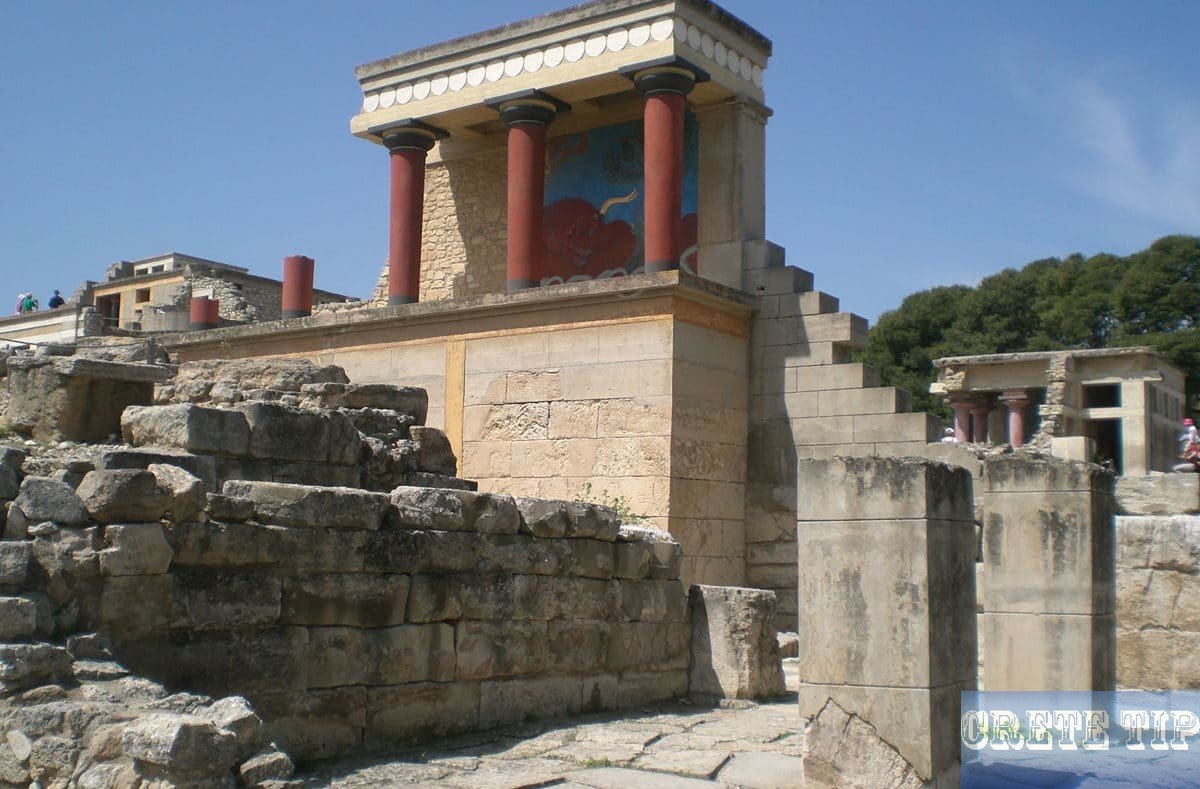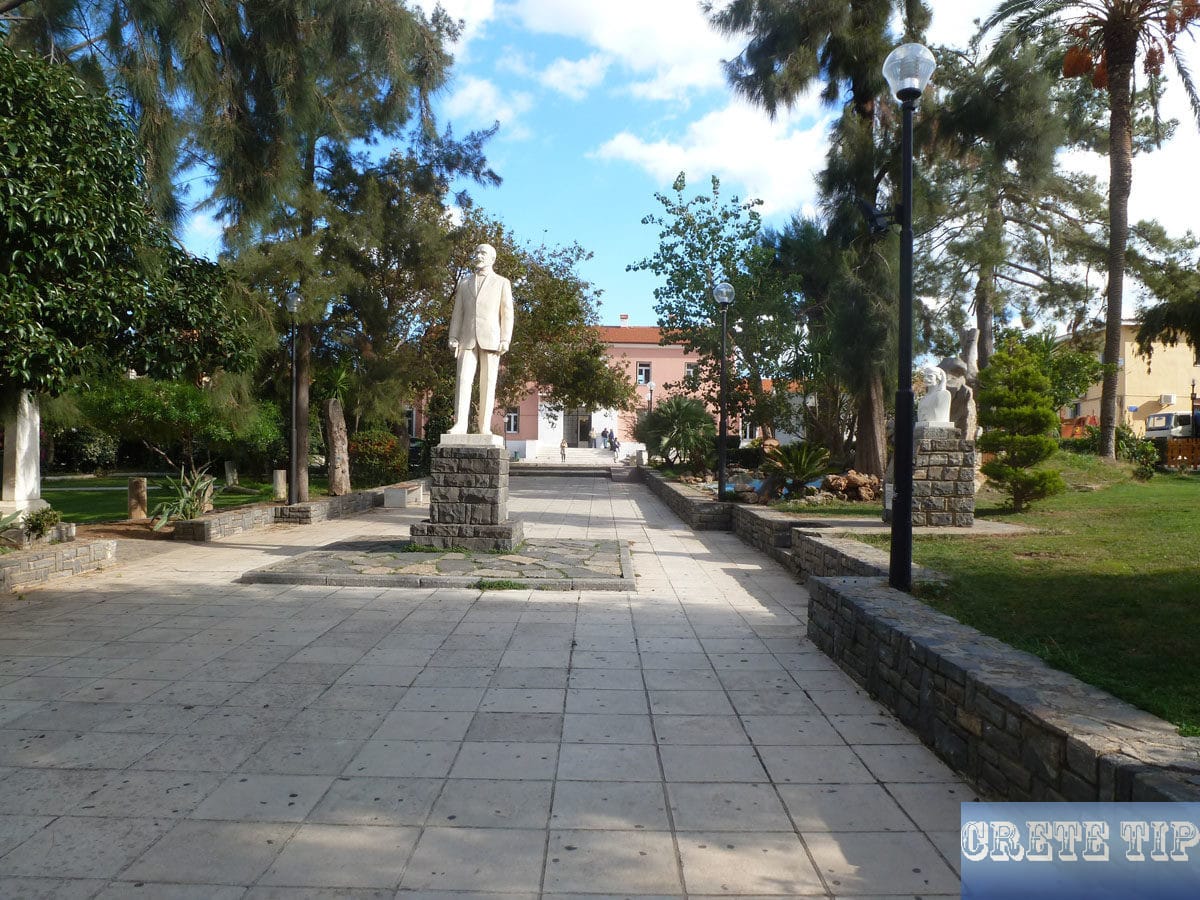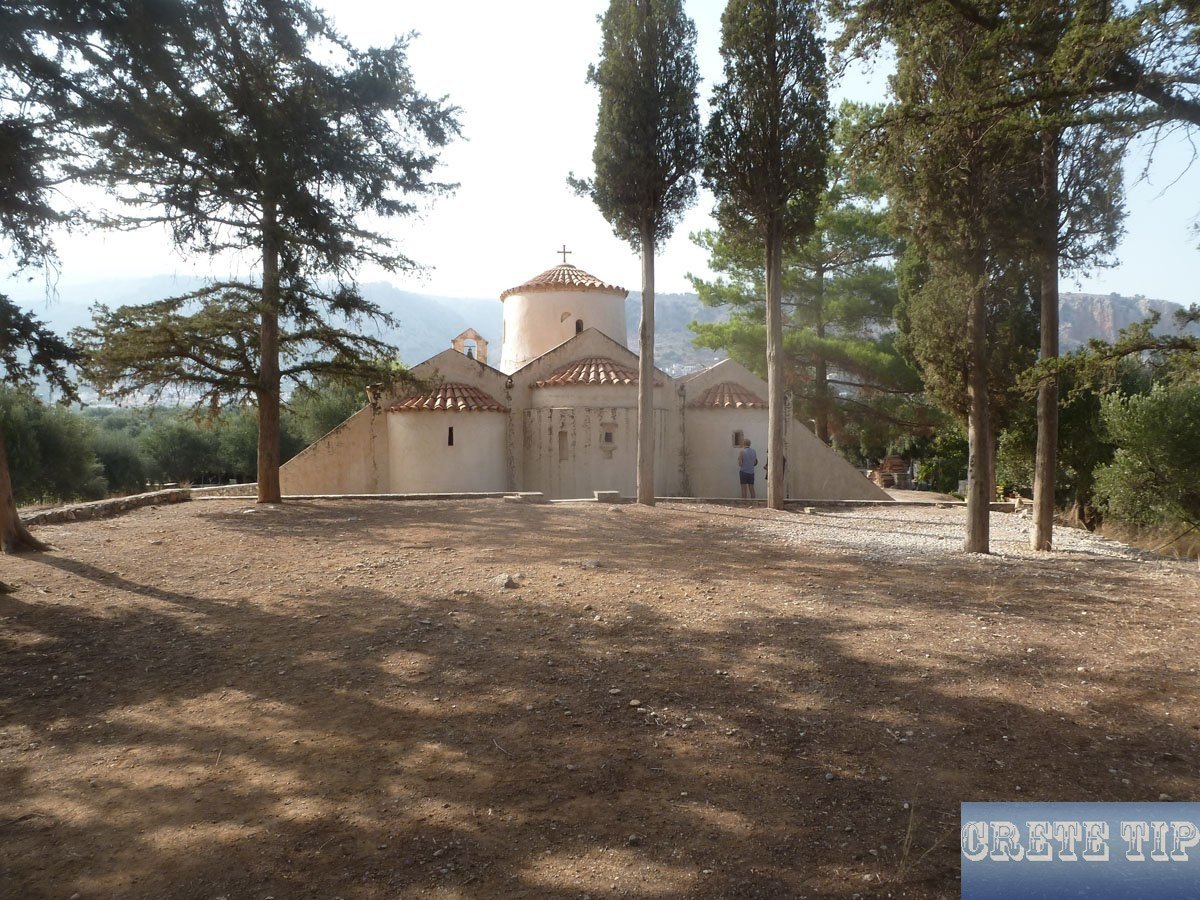Fortress of Spinalonga in the Gulf of Korfos.
History of the fortress and the island of the ‘Living Dead’, the lepers’ colony in the last century.
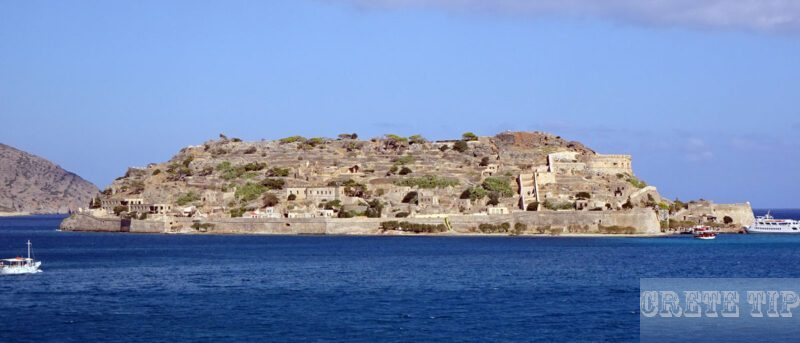
Overview of the Spinalonga Fortress
Fortress of Spinalonga
The Fortress of Spinalonga is a significant historical site located on a small island off the coast of Crete, Greece.
Location: Spinalonga is a small island in Crete, situated in the Gulf of Elounda in northeastern Crete.
History: The island has a rich history dating back to ancient times. It was already fortified in ancient times, but its most famous fortifications came later.
Venetian Construction: In the late 16th century, specifically around 1574, the Venetians built a powerful fortress on Spinalonga. The construction continued until 1649.
Purpose: The fortress was built to protect Venetian trade routes and serve as a base in case of war with the Ottoman Empire. It was also designed to protect the military harbour of Elounda.
Architecture: The fortress is described as a fortified complex with high double walls and stern towers. It included two mezzelune (half-moon bastions) built opposite the mainland to prevent enemy ships from entering the inlet.
Ottoman Period: After the Venetian-Ottoman wars, Spinalonga [became an Ottoman colony from 1715 to 1898](https://greekcitytimes.com/2024/04/07/spinalonga-crete-history-dark-2-2/).
Leper Colony: In the 20th century, Spinalonga gained notoriety as a leper colony, which operated from 1903 to 1957.
Current Status: Today, Spinalonga is a popular tourist attraction, drawing visitors interested in its unique history and well-preserved fortifications.
UNESCO Candidacy: The Fortress of Spinalonga has been [proposed for inclusion on the UNESCO World Heritage List, highlighting its historical and cultural significance.
Cultural Impact: The island and its fortress have inspired various works of literature and media, including the novel “The Island” by Victoria Hislop, which has further increased its fame.
The Fortress of Spinalonga stands as a testament to Crete’s complex history, reflecting various periods of Venetian, Ottoman, and Greek influence, and serves as a compelling destination for those interested in military architecture and Mediterranean history.
Visit of Fortress of Spinalonga
(with the drone over Spinalonga)
Spinalonga sits just off the coast near the town of Plaka, in the Agios Nikolaos area of Lasithi, northeastern Crete. The island is pretty small—about 85 acres—but its history is anything but tiny.
For ages, it served as a Venetian fortress, then a hideout during the Cretan War, and later became an Ottoman settlement. But what really put Spinalonga on the map in modern times? Its role as a leper colony in the early 1900s, which still shapes how people see it today.
The island’s spot at the mouth of Elounda Bay gave it real military weight. You can still see the old fortifications—they’re reminders of its Venetian past.
During the Ottoman era, a small community lived there. Not many traces of that remain, but it’s all part of the layers of history you can feel walking around.
These days, Spinalonga draws crowds for its ruins and scenery. People come for the stories, the views, and maybe a little bit of that eerie atmosphere.
In the summer of 2024, 400,000 visitors were counted there. The rocky islet was the second most popular tourist attraction after Knossos on Crete.
Lately, though, changes in ticket prices have shifted who shows up and how often.
Visitor Access and Ticket Pricing
The entry fee jumped from €8 to €20 not long ago. That’s a steep hike, and it’s changed how folks approach a visit.
Some worried this would scare off a lot of tourists, but the drop in numbers has been more modest—maybe around 10 to 15%. Weather, especially early in the season, also plays a part in who ventures out.
It’s not uncommon now to see people arrive at Spinalonga and then skip the actual site because of the price. They’ll hang out on the boat, or just stroll the island’s edge, never stepping inside the main gate.
Others just do a boat loop around the island, totally avoiding the entrance fee. Tourists seem to weigh the cost against what they expect to get—makes sense, right?
Economic Impact on Local Tourism
Locals running shops and restaurants in places like Plaka have noticed people spending a bit less. But it’s tough to blame just the ticket price—tourism always has its ups and downs, and lots of things can shift spending.
When you compare Spinalonga’s fee to other famous sites, it’s not wildly out of line. The higher ticket price is supposed to help with upkeep and restoration, though honestly, some buildings are still in rough shape.
Cultural and Historical Significance
Spinalonga’s reputation as a leper colony makes it stand out. Starting in 1903, authorities sent people with leprosy there, isolating them from the rest of Crete.
Before that, those suffering from leprosy often hid in caves near Chania, facing even harsher conditions. Creating the colony on Spinalonga was meant to offer more organized care, though life was still tough and lonely.
The island’s history is heavy—disease, stigma, and a lot of resilience. Today, it pulls in not just tourists, but also historians and archaeologists who want to understand that chapter.
Summary Table of Key Points
Topic |
Details |
|---|---|
Location |
Island near Plaka, Agios Nikolaos, Lasithi, Crete |
Size |
Approximately 85 acres |
Historical Roles |
Venetian fortress, Ottoman settlement, leper colony |
Entry Fee (2025) |
€20 (was €8 previously) |
Visitor Trend |
Slight decrease (~10–15%), partly due to ticket price |
Visitor Behaviour |
Some avoid paying, prefer boat tours or walking around island |
Economic Impact |
Minor reduction in local spending but not solely due to price |
Restoration Efforts |
Ongoing but some buildings remain dilapidated |
Cultural Significance |
Former leprosy colony, symbol of disease isolation and care |
Visual and Cultural Experience
Visitors to Spinalonga can wander along the fortress walls. You can step inside abandoned buildings and imagine how the isolated community once lived there.
Audio tours and guided walks really help bring the island’s history alive. They make it clear that Spinalonga is so much more than just another tourist spot.
People keep working on improving the site’s condition. There are even plans to get Spinalonga listed as a UNESCO World Heritage Site.
If that happens, it could help preserve the island’s legacy. Maybe it’d even boost support for ongoing maintenance.
History of Fortress of Spinalonga
At the north point of the Gulf of Korfos can be found the tiny isle of Spinalonga. On many maps the place is recognized by the identity Kalidona – a title utilized by the experts since the Fifteenth Century, however a title which the residents certainly not make use of.
Today Spinalonge is a famous excursion destination for many visitors.
There are a few solutions as to the way the isle took its name.
The Venetian historian, Flaminios Komilios, named the island Spina Leonis which suggests ‘back of the lion’, and perhaps this term had been modified somewhat through the years giving us the existing variant. The historian Coronelli, in his book Isolario named the big region of rock-cut from the other parts of the peninsula Spinalonga which means ‘long thorn’ – once more a title explaining the form of the terrain. An additional quite easy reason would be that the Venetians called the region after a Venetian island of the identical term – this Spinalonga can be found in the Adriatic Sea close to Venice.
History
Between 829 AD till 961 AD the Arabs governed the entire Island of Crete. Records provides extensive stories of the great battles between the Arabs and the Byzantines, and it is this period when the majority of the strategic locations (for instance Heraklion and Spinalonga) started to be fortified. It was the Byzantines who finally drove the Arabs from the island. The courageous General, Nikiforos Fokas (who later on became Emperor of the Byzantines) made the first task in direction of freedom by landing his forces on the shorelines of Kolikitha. A monument, in the form of a church, was built for his honor, and even called after him. The ruins of the Fokas Church can still be spotted near the beach of Kolikitha, although the majority of the items have finally been taken or shifted from the location.
Following the 4th Crusade the Island of Crete fell into the hands Venetians and was offered as a present to the Prince of Momferatus. During this period (1204-1210) the Genoate Buccaneers from Genova additionally occupied the Island. The culture of Crete increased beneath the Venetian control, and it is during this period that the Arts began to grow. Amongst others, we learn about the legendary artist El Greco, and the poet Vitsentsos Kornaros. The Venetians in addition created the Salt Mines close to the area of Olous, and in 1526 they reduce the route between Spinalonga and Kolikitha, creating an individual isle. Then they constructed the actual fortress on Spinalonga (while using rocks from the ancient city of Olous and the neighborhood), and Spinalonga grew to become probably the most important strategical strongholds in the entire of Crete. By outfitting the citadel with thirty-five cannons, as well as leaving only a thin strip of water through which the opponents might slip through, the Gulf of Korfos (Elounda bay) was protected.
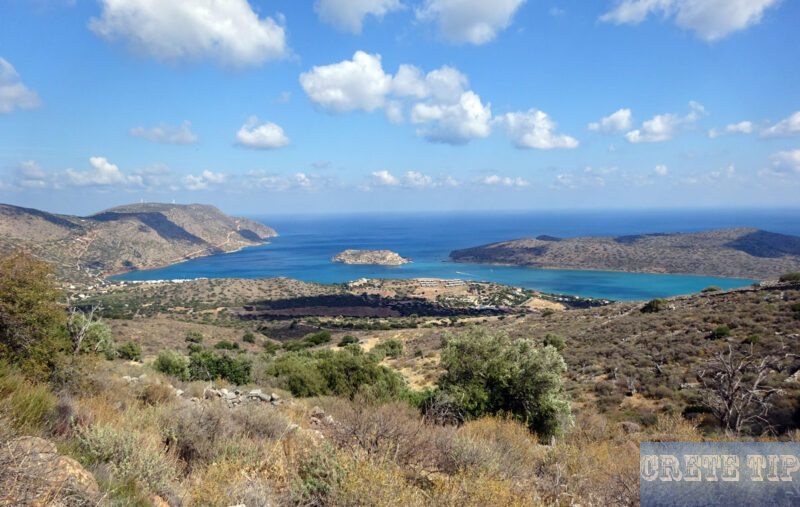
It was the Turkish who had the Venetians away from Crete. There followed many horrible and bloody struggles between the local people and the Turkish intruders, however after many years of siege, The island became a part of the Ottoman Empire in 1669. Spinalonga was amongst the last fortresses to fall into the hands of the Turks. Nevertheless, they had conquered most of the neighboring areas, and the Venetians conditionally gave up the Island of Spinalonga in 1715.
The life of the Cretans under the tyrannical Turkish rule was tremendous. There is evidence of the story of the Cretan Partisans trying to hide in the Cave of Milatos. The Turks captured them, tied them, and paraded the line of 50 prisoners by way of each of the villages, until finally they arrived at Elounda. At this point these folks were transported to Spinalonga, where they were all killed.
The Turkish levied lots of large taxes on the people, and it is known that all the wages from the Salt Mines, which were running throughout these days, was taken away by the Turkish Governor. The private prospects and satisfaction of the residents worsened, with the Cretans turning into second-class people – the Turks obtaining all the prosperity and confidence.
The Turks governed the different locations by using their own Governors, and Elounda’s Governor (Ali Afentis) resided in the neighborhood called Tsifliki, which is about 2 1/2 kilometres from the Elounda towards Plaka. The building which housed his chambers nevertheless exists, however has become a private residence. The Turkish Security Group took up residence in the fortress of Spinalonga, just as much to defend themselves from the Cretan revolutionaries as anything else! It is remarkable to see the proportions of the Island, and after that to notice that in 1834 there were Eighty Turkish families residing there, and in 1881 there were 1112 people in address.
Britain, France and Russia finally came to the help of the Cretans, and at last drove the Turkish military out in 1898, creating a new Union under the power of George of Great Britain.
Throughout the following 10 years, the French party established the canal between the Gulf of Korlos and the open sea of Mirabella. Upon checking out the location of the ancient City of Olous they found a mosaic displaying an image of flowers and fishes. The mosaic comes from the First Century, and can still be visited these days in the place behind the Canal Bar.
The island lastly became one with Greece when the Island was handed to the mainland in 1913.
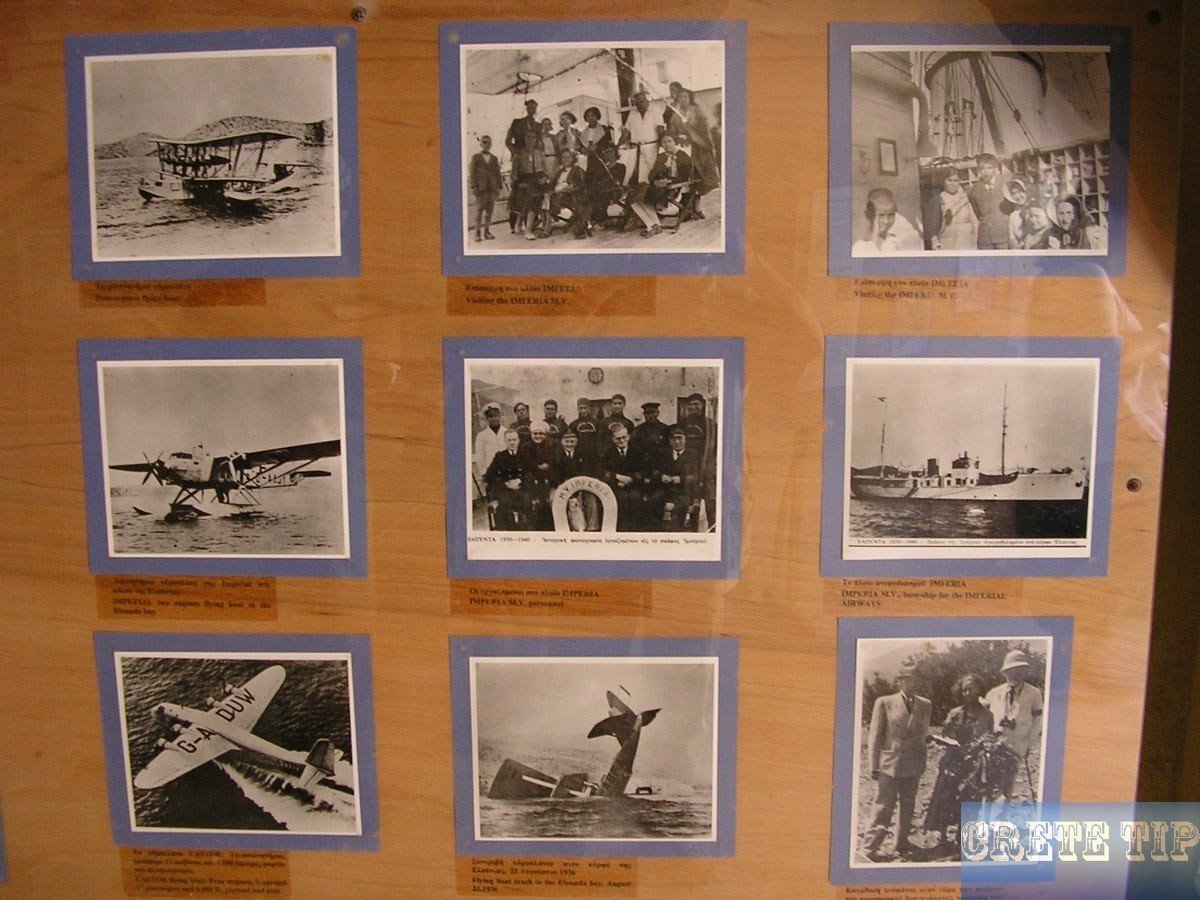
Throughout the period 1930 – 1940, the British Company Imperia Airways used the Gulf of Korfos as a refueling stop for seaplanes – the flight path being London to India. On 22nd August 1936 accident struck, and one of Imperia’s seaplanes crashed in the Gulf, wiping out the crew. The final resting place of these men is the graveyard of Agia Triada in Elounda.
Island of the Living Dead
This was most likely the worst time on the island’s record – the period throughout when a lepers’ colony was introduced.
Even though the sole method to get leprosy is through immediate touch concerning an open wound on a leper, along with a new injury on a healthy individual, leprosy is without question a scary disease, and thought of to be a symbol of impurity. To be able to attempt to avoid its distribute, the victims were pushed to stay besides the other parts of the society.
At first, most of the lepers on Crete had been separated at Miskinias – a location next to Heraklion. At some point nevertheless it had been chosen to carry them to Spinalonga. The first ships transported the pioneer lepers to the Isle on 13 October 1904, the actual handful of staying Turkish residents immediately abandoned, and Spinalonga turned out to be best-known as The Place of the Living Dead.
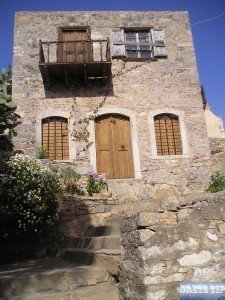
The Authorities selected this isle simply because it had been a remote place, however simple to access by vessel with resources of food, water and medical aid. Nevertheless, the details had been improperly prepared. The brand-new residents had been instructed to occupy home in the empty homes, as absolutely no new houses had been gotten ready for their appearance. The luckier lepers acquired the Turkish houses, that have been the most up-to-date and for that reason in acceptable state – other folks needed to repair the places up as best they were able to.
The lepers furthermore stumbled on depend on their own family members to deliver them food and supplies, because the vessels ordered for making these tours had been sporadic and questionable. Circumstances were terrible, and it is hardly surprising that the lepers believed downgraded, unloved and neglected. These people turned out to be very frustrated with the healthy outsiders who provided minimal help, and they established their unique little community, creating their unique rules and life-style. It is known that they took benefit of the outlawed transport of tobacco, liquor, along with other contraband that the smugglers – who have been nevertheless operating from Spinalonga in the 1920s – shipped there.
As a result of monotony, drunkenness and the results of the disease that causes depression as well as frustration, struggling frequently started throughout the community. When Crete established itself as a part of Greece in 1913 and lepers from different areas of the nation started to be transferred to Spinalonga, the saddest level of battling inside the leper group started. The quarrels turned out to be every day, and the Police from Elounda could be informed by the ringing of the church bells by the Administration staff. Order might commonly be brought back, in severe scenarios there was a jail on the isle in which the ‘troublemakers’ could cool-down. This had seldom been made use of nevertheless, and it was gradually forgotten.
Improvment of the situation
It had been following 1930 that situations began to improve, and the Authorities started to modernize facilities on the isle to help make situations more acceptable. A power generator had been running, providing light to Spinalonga well before the communities on the mainland got electrical power. A library, school and 2 chapels were also established. The lepers received a pension of 20-25 drachma daily, therefore it was then achievable to purchase their private foods.
Bearing this in mind, the folks from the places of Vrouhas, Seles, Shinias and Elounda began to bring meat, eggs and vegetables to Spinalonga’s marketplace, and is also during this time that the Village of Plaka started to expand. The village people could collect in Plaka to offer their products making the boat visit to Spinalonga, and doctors as well as employees being employed on the Isle furthermore discovered it simple to stay in the Plaka vicinity.
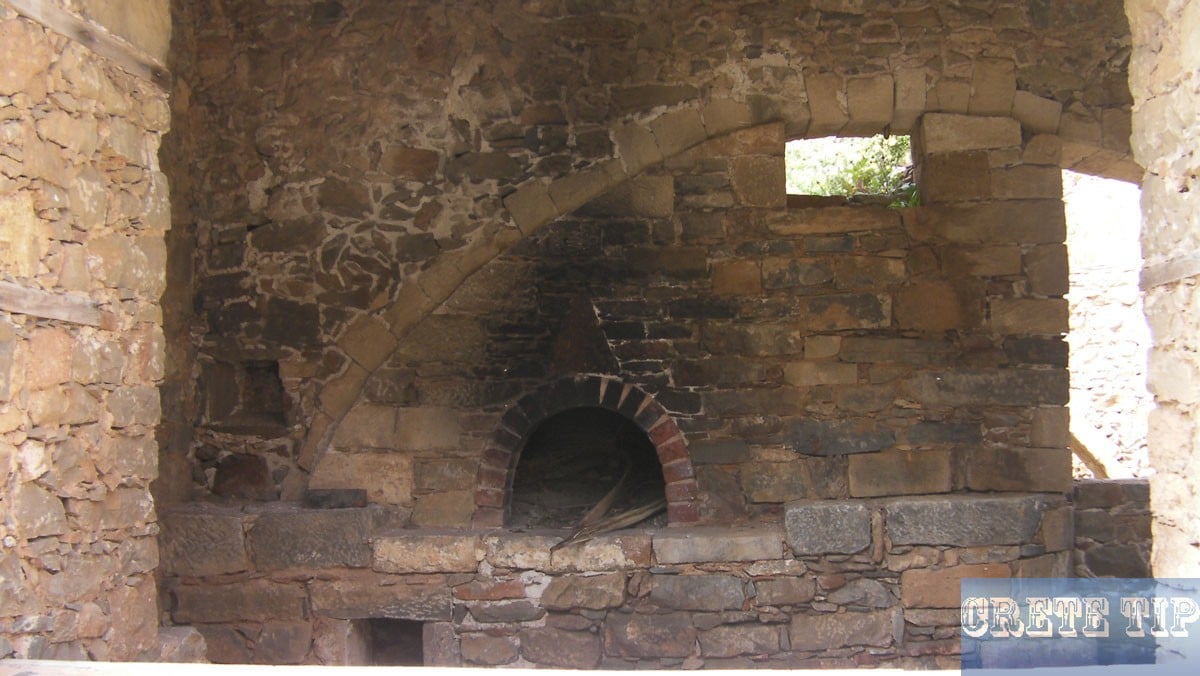
Prior to anybody departed from the Isle they had to maintain their personal belongings, which includes money, sterilized in the Disinfectant Room, which was found at the main entrance gateway. Coke fires had been preserved burning and steam had been passed through beds of sulphur to accomplish this objective. This needless to say was a preventive measure to avoid any further distribute of the disease.
The leper community in addition started to produce their own food, and finally the authorities split the property between them, so they really had been after that in a position to create earnings by themselves by offering their products – or perhaps their own tiny plots of land, when they found out that they were too sick to develop it by themselves. Little stores started to spring-up, such as barbers, a shoemaker, three or four raki bars, a bakery and three minimarkets. A laundry had been arranged beside the Church of Panteleiman, and the everyday wash was carried out in sizable concrete basins with water warmed up over open fire places.
The undesirable situation of the people of Spinalonga finally began to be realized, and aid started to be provided. One example of a support was a gift of funding from a person, whose reward allowed a pair of new blocks of homes and a doctor’s surgery to be constructed. The Authorities hired doctors, nurses, cleaners and laundry personnel, and the Isle actually got its own priest.
Life in the lepers colony
Although it had been against the law for lepers to become married, this priest had been agreeable to execute the wedding ceremony, and lots of couples took benefit of it. Children were born, but in this case the authorities would step in – if the baby was born with verification of leprosy, then the child might stay on the Island together with mother and father. In case, however, the infant had been healthy, then it had been removed from the mother and put into an orphanage. After reaching adulthood the orphan would then be provided with support by the Authorities to find work and turn into self-sufficient.
The Island’s priest furthermore carried out the funeral services, and the dead had been laid to rest in the south-east comer of Spinalonga in a graveyard comprising 44 concrete burial plots, closed by stone slabs. Since the graveyard was compact it had been recommended after a period of 4 years for the bodies to become exhumed, and the bones relocated to a concrete tower in one corner of the funeral place.
Since circumstances considerably improved as well as concern of contamination decreased, healthy people wanted to visit as well as reside on the isle – in order to be closer to their beloved people who had the disease. This was practical if they could obtain employment there. They would for that reason speak to the Head Doctor and request him for a job. There have been, needless to say, just a few opportunities therefore not everybody had been happy.
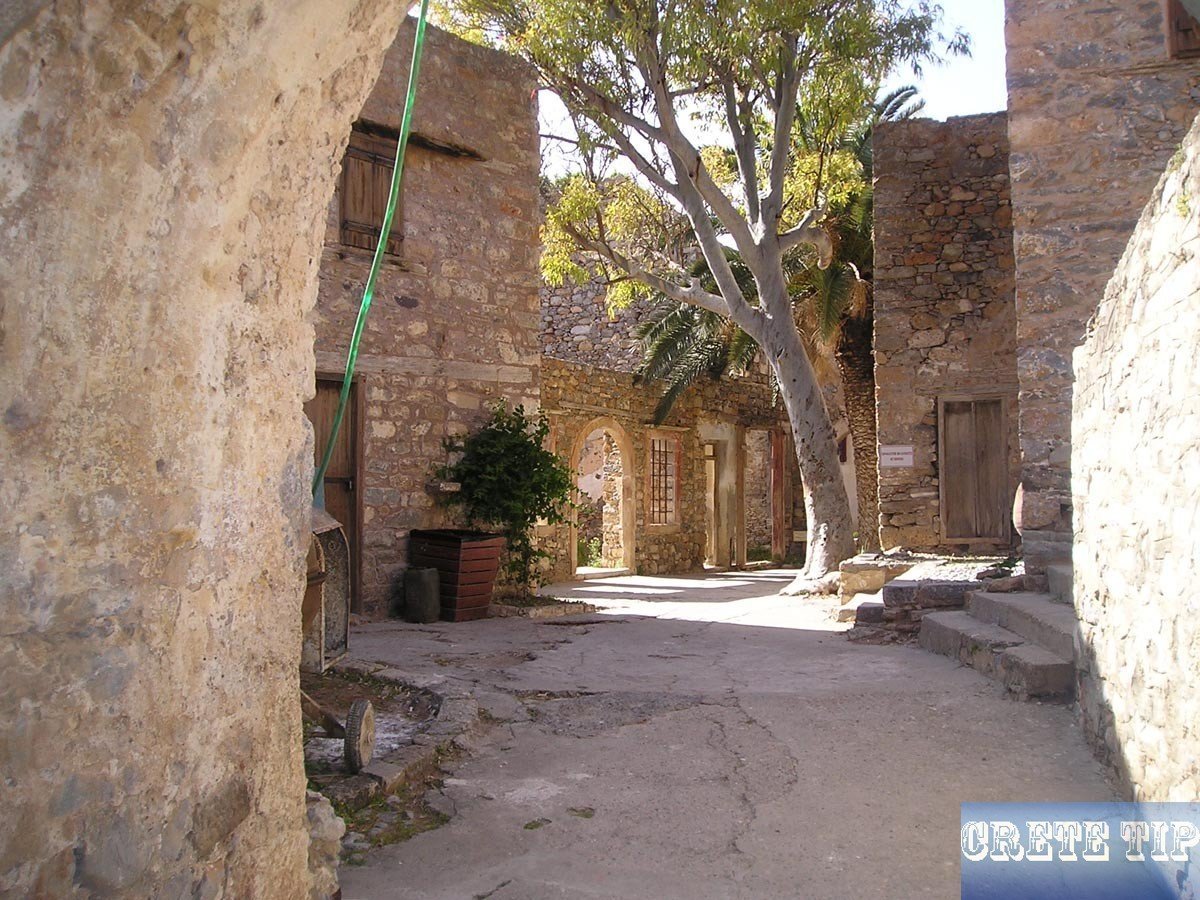
There is a report about a lady, who wished to be together with her beloved husband. She had been unfortunate, since all the employment were completed, although not to be crushed she chose that she would poison herself with leprosy to ensure that she as well could be enabled to stay on the island. She got a hypodermic shringe, removed some liquid from her husband’s open wounds, and injected this liquid straight into her own arteries. Nevertheless, not every person is vulnerable to the infection – she continued to be healthy, and as a consequence was unable once more in her attempt to become rejoined together with her husband.
The lepers wanted a method to obtain thoughts and demands paid attention to – and applied – by the related Authorities representatives. Because of this they initiated their unique Trade Union and Syndicate. If the Authorities declined their demands – whether it is for superior medical services or for an increased pension – then the leper community could start a strike. They will remove the Authorities staff from the isle, ring the church bells, and place black banners within the Venetian citadel – therefore making sure that everybody in the neighboring towns was completely conscious of what was taking place on Spinalonga. These folks were really persistent, and in some cases the strikes continued in excess of 10 days. At some point the noticeably highly regarded Head Doctor could find a way to make a deal with the lepers, and order could be renewed.
Leaving the island
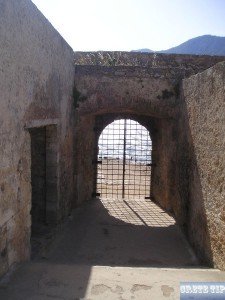
The sole formal method for the lepers to depart from the place was by receiving a Pass. Such a Pass was only granted for really important motives, for example financial troubles to settle, agreements regarding grounds and properties to be made, or to participate in the Court as a witness in some trial.
The lepers nevertheless had been sometimes successful in unofficially hitching a pick up from a local fisherman, or perhaps by swimming from Spinalonga to the shore. This second option wasn’t very effective however, since the swimmers had been not difficult to recognize, and by the occasion they arrived at the land the Police might be ready to capture them back again.
The first sort had an improved effectiveness, and there is a story about an event when a captain offered a pick up to a young leper girl who wished to visit her family in Agios Nikolaos. There was an unlucky accident on this certain trip nevertheless – the crew of the vessel started to discover a burning smell, and after examination found out that the poor girl had been relaxing her infected leg on the exhaust of the vessel. The flesh had been burnt, however the girl had noticed not anything, since the disease of leprosy attacks and wrecks the nerves within the body, destroying all sense.
There is one more report about a leper couple who did find a way to obtain a Pass to go out of the Island for 15 days. The couple went to their home of Iordatis in North Greece and started to solve the required documents regarding some of their property. The couple could not agree over the arrangements and, in just a minute of anger, the man murdered his wife, cut off the woman’s head, and provided it in a box to Spinalonga. He, himself, went on the run, but had been captured and brought back to the Isle.
A video about Spinalonga from 1935 (with English subtitles):
End of the lepers colony
The positive changes to situations continued through the years. Between 1945 and 1950 the manager organized the growing of trees to assist relieve the unwelcoming rugged presence of the ground, and to produce lemons and various other fruits.
Local artists were occasionally asked to perform on the island, to offer some light comfort for the leper community, and by 1950 the place got its own microbiologist, neurologist, pathologist and dentist. In 1953 the existing power generator had been exchanged with a more advanced device, supplying extra energy for cooking, etc.
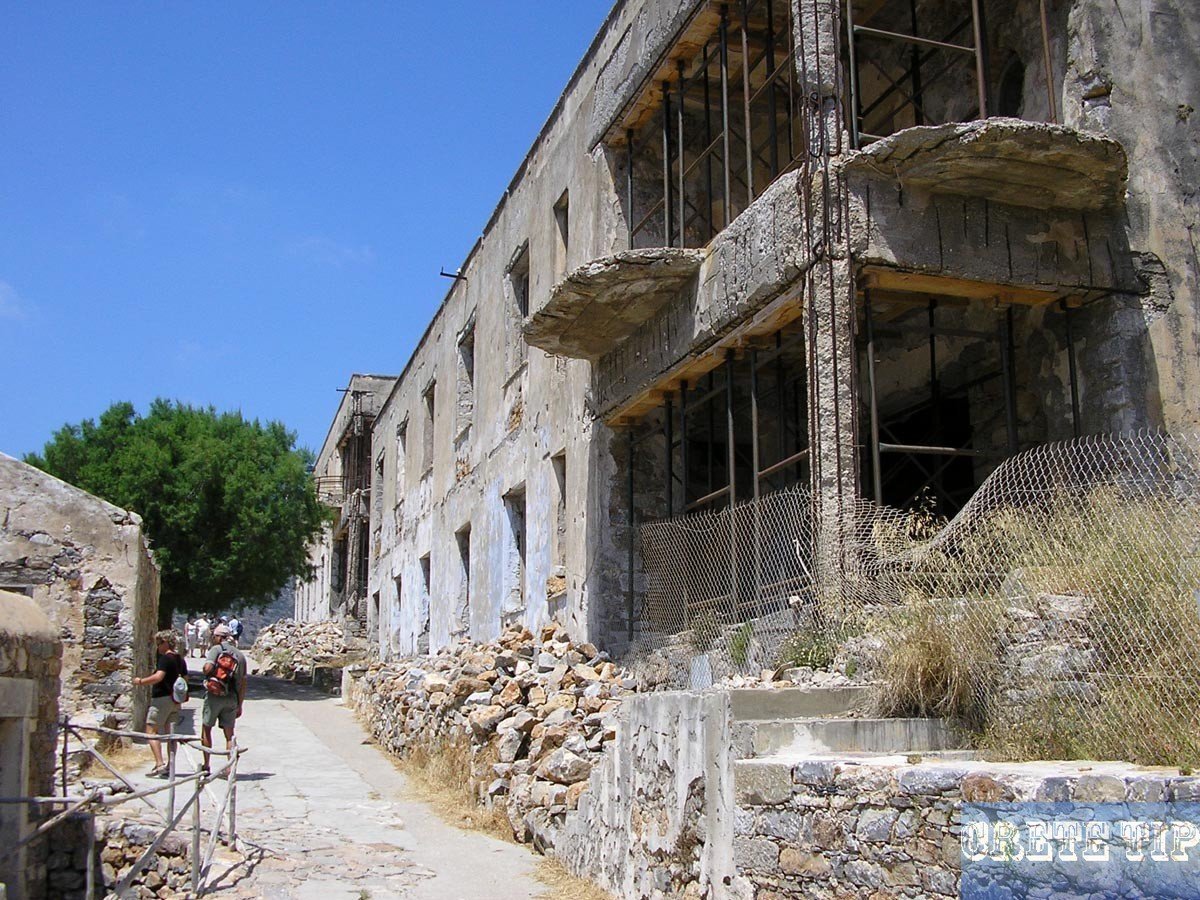
The primary issues nevertheless still existed however, and the lepers grew to become sick and tired of their unpleasant lifestyle, so cut off from standard culture. They started to make demands to the Authorities to be relocated to an even more civilized atmosphere, and after numerous strikes their pleas had been lastly replied. In July 1957 the last of the 227 surviving lepers were moved to Agia Barbara, on the outskirts of Athens. The infection of leprosy was finally taken manageable, and several of the lepers recovered adequately sufficient in order to continue an ordinary existence inside a community.
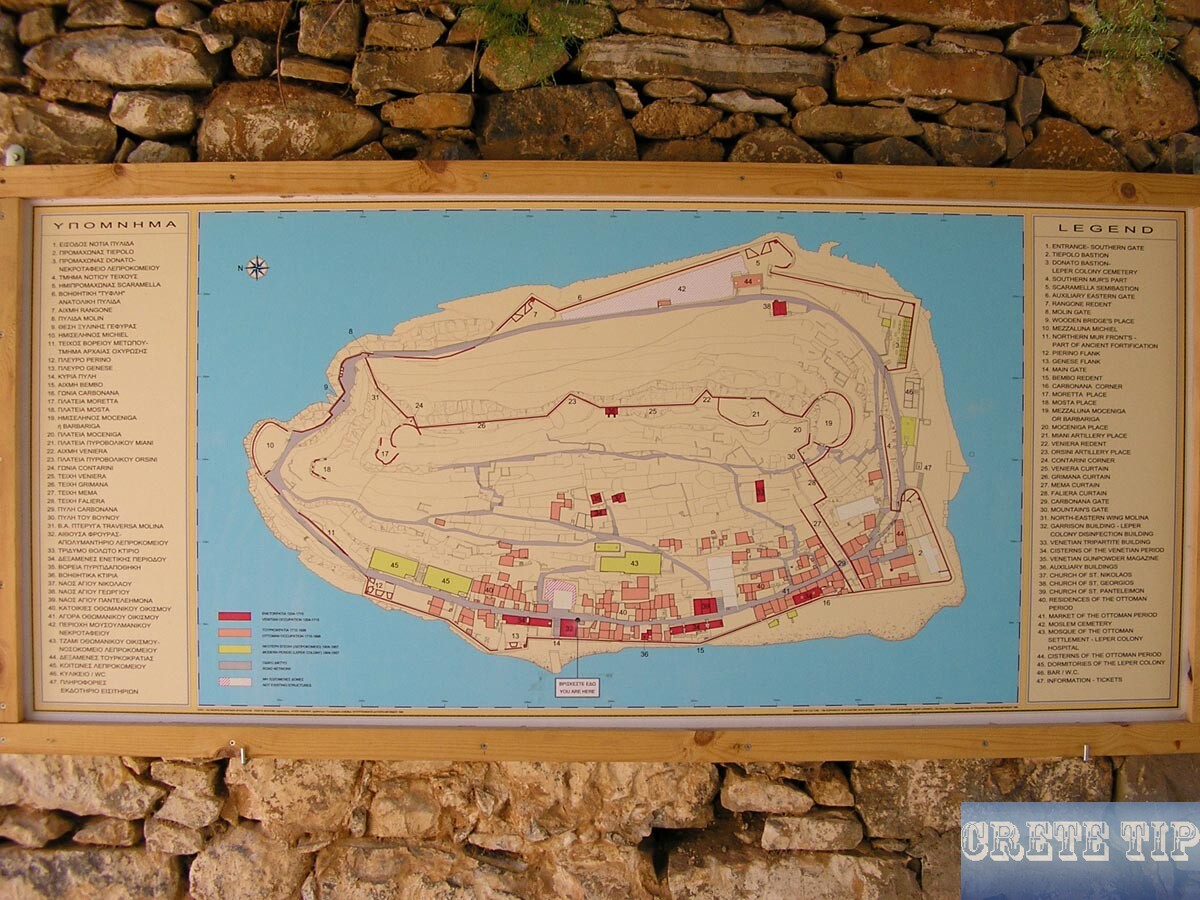
Following the lepers abandoned, the structures on the isle declined into ruin, and it wasn’t before around 1980 that the village of Elounda, together with the Greek Tourist Board, began to refurbish a few of the complexes. Spinalonga, full of history and archaeological fascination, after that started to acquire a large number of guests that land on its coast line annually.
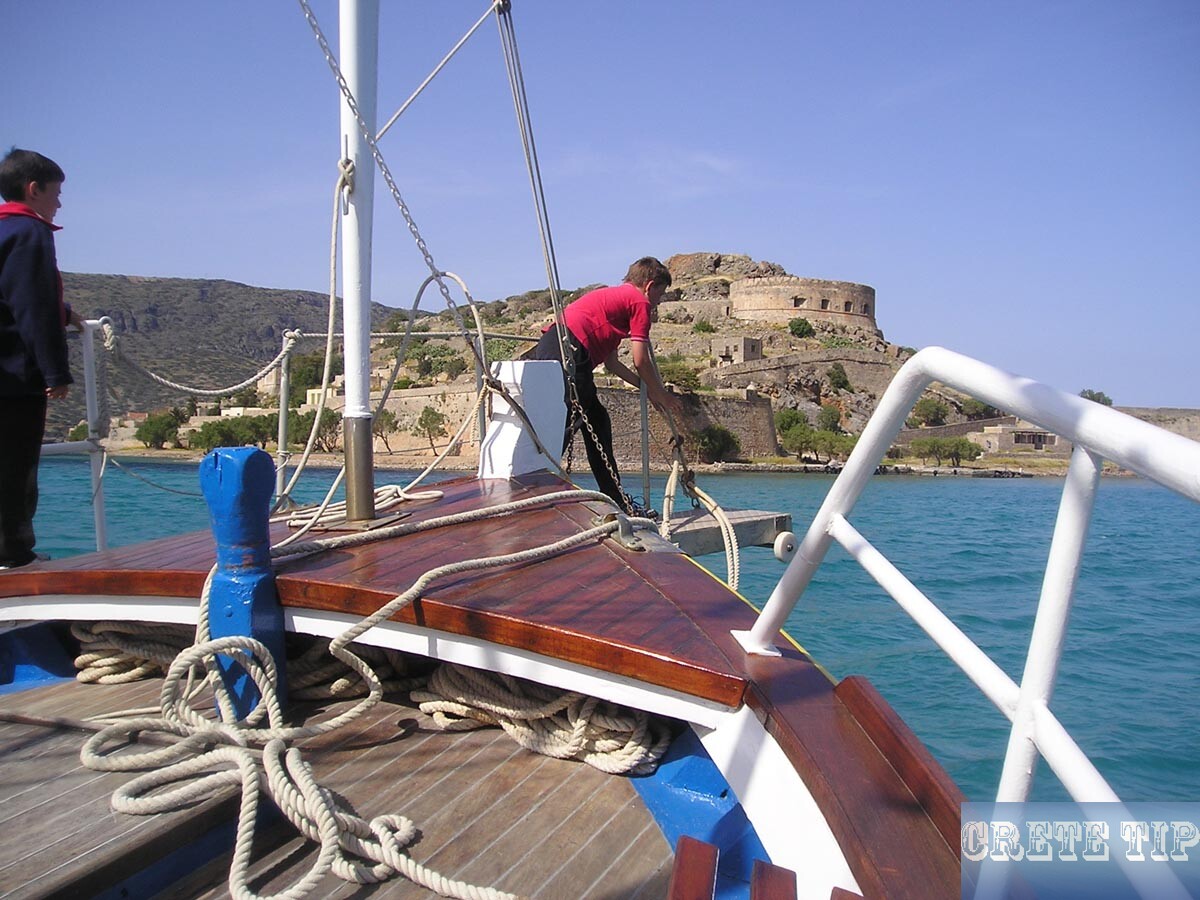
More pictures about the Fortress of Spinalonga
Video: Visit to Spinalonga
Video from an excursion to the Fortress of Spinalonga.
Directions to the closest point to the Fortress of Spinalonga
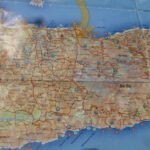
Click here: Directions Fortress of Spinalonga.


